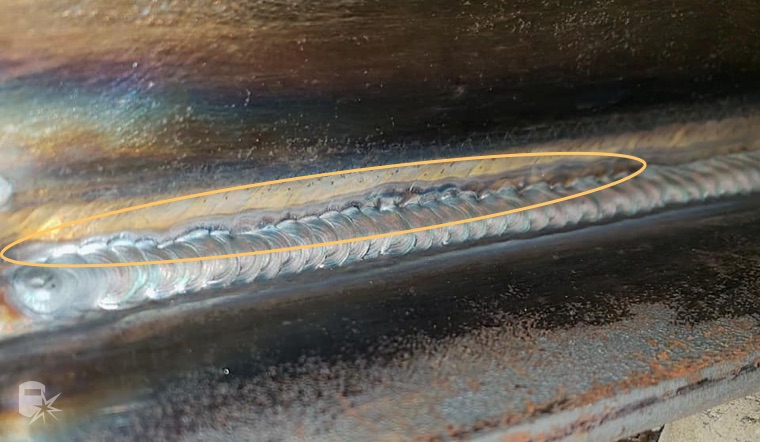Preventing Weld Undercut Made Easy: Secret Techniques Introduced
A Comprehensive Overview to Identifying, Stopping, and Mending Undercut Welding Issues in Your Welding Projects
In the world of welding, experiencing undercut issues is a common obstacle that can endanger the structural stability and total quality of your welding jobs. Keep tuned as we explore the crucial elements of recognizing, protecting against, and dealing with undercut welding troubles, offering you with important understandings and strategies to raise your welding abilities to the next level.
Typical Reasons For Undercut Welding
Undercut welding, a typical issue in welding processes, can be triggered by numerous elements that need to be meticulously recognized and resolved to guarantee the integrity of the weld joint. Among the main root causes of undercut welding is too much heat input. When the welding criteria, such as voltage, current, or travel rate, are not appropriately set, an excessive quantity of warm can be created. This excess heat results in the melting and subsequent removal of the base material along the edges of the weld joint, creating a groove referred to as undercut.
One more typical reason for undercut welding is improper welding strategy. Insufficient adjustment of the soldering iron or gun, incorrect angle or distance in between the work surface and the lantern, or inconsistent traveling speed can all add to the formation of undercut. Furthermore, utilizing the wrong welding consumables or electrode size for a particular joint arrangement can result in undercut problems. Determining these root causes and implementing rehabilitative actions is important in preventing and correcting undercut welding troubles in welding tasks.
Identifying Undercut in Welds

To determine undercut properly, correct lighting and magnifying tools are vital to check the weld joint extensively. Utilizing tools such as a welding gauge or a magnifying glass can help in finding even the tiniest undercut blemishes. In addition, running a finger or a finger nail along the weld joint can sometimes disclose undercut, as the surface might feel unequal or have a dip where the undercut exists.
Safety Nets for Undercut
Having a deep understanding of the sources of undercut in welds enables the execution of effective preventive procedures to keep weld high quality and stability. One essential preventive action appertains weld joint prep work. Making sure that the sides are clean, devoid of contaminants, and effectively beveled can significantly lower the probability of undercut (Preventing weld undercut). Additionally, picking the proper welding specifications, such as voltage, current, and take a trip rate, is essential. These settings ought to be optimized to avoid excessive heat input, which can bring about damage formation.

Methods for Dealing With Undercut

To resolve undercut concerns successfully, welders can employ certain strategies aimed at remedying the flaw and restoring the stability of the weld joint. One method is to readjust the welding parameters, such as the voltage, current, and travel speed, to make sure appropriate heat input and combination. Enhancing the welding current or minimizing the travel rate can assist fill out the undercut. Furthermore, altering the welding technique from a push to a drag or vice versa can likewise aid reduce undercut.
An additional method is to make use of a weaving motion while welding to make certain correct sidewall combination and fill in the undercut. By oscillating the welding arc back and forth within the weld joint, the welder can deposit a lot more filler product into the undercut locations, properly removing the flaw.
Furthermore, grinding out the undercut and rewelding the joint can be a feasible remedy for more serious undercut problems - Preventing weld undercut. This procedure entails eliminating the undercut area, preparing the base click here for more info steel, and then rewelding the joint with correct welding specifications and techniques to avoid undercut from repeating

Specialist Tips for Staying Clear Of Undercut
Utilizing proper welding techniques and preserving control over vital welding criteria are essential approaches for welders aiming to prevent undercut in their weld joints. In addition, picking the proper welding process and filler metal for the specific application can assist protect against undercut. Maintaining a constant travel rate throughout the welding process is one more necessary idea to stop undercut.
Verdict
In final thought, recognizing, preventing, and repairing undercut welding issues in your welding projects is important for ensuring solid and resilient welds. Preventing weld undercut. By recognizing the usual root causes of undercut, having the ability to recognize it in welds, applying safety nets, and utilizing correct strategies for taking care of undercut, you can stay clear of potential issues and develop top quality welds. Adhering to specialist pointers for avoiding undercut can help you enhance your welding abilities and create far better outcomes in your tasks
Undercut welding, a typical concern in welding procedures, can be created by various factors that require to be thoroughly recognized and addressed to guarantee the stability of the weld joint. Additionally, running a finger or a fingernail along the weld joint can sometimes expose undercut, as the surface area might really feel uneven or have a dip where the undercut exists.
Utilizing appropriate welding strategies and keeping control over vital welding parameters are vital techniques for welders intending to protect against undercut in their weld joints.In conclusion, recognizing, preventing, and repairing undercut welding issues in your welding projects is vital for making sure durable and solid welds. By understanding the typical causes of undercut, being able to determine it in welds, applying preventive procedures, and utilizing correct techniques for dealing with undercut, you can prevent potential problems and produce high-grade important link welds.